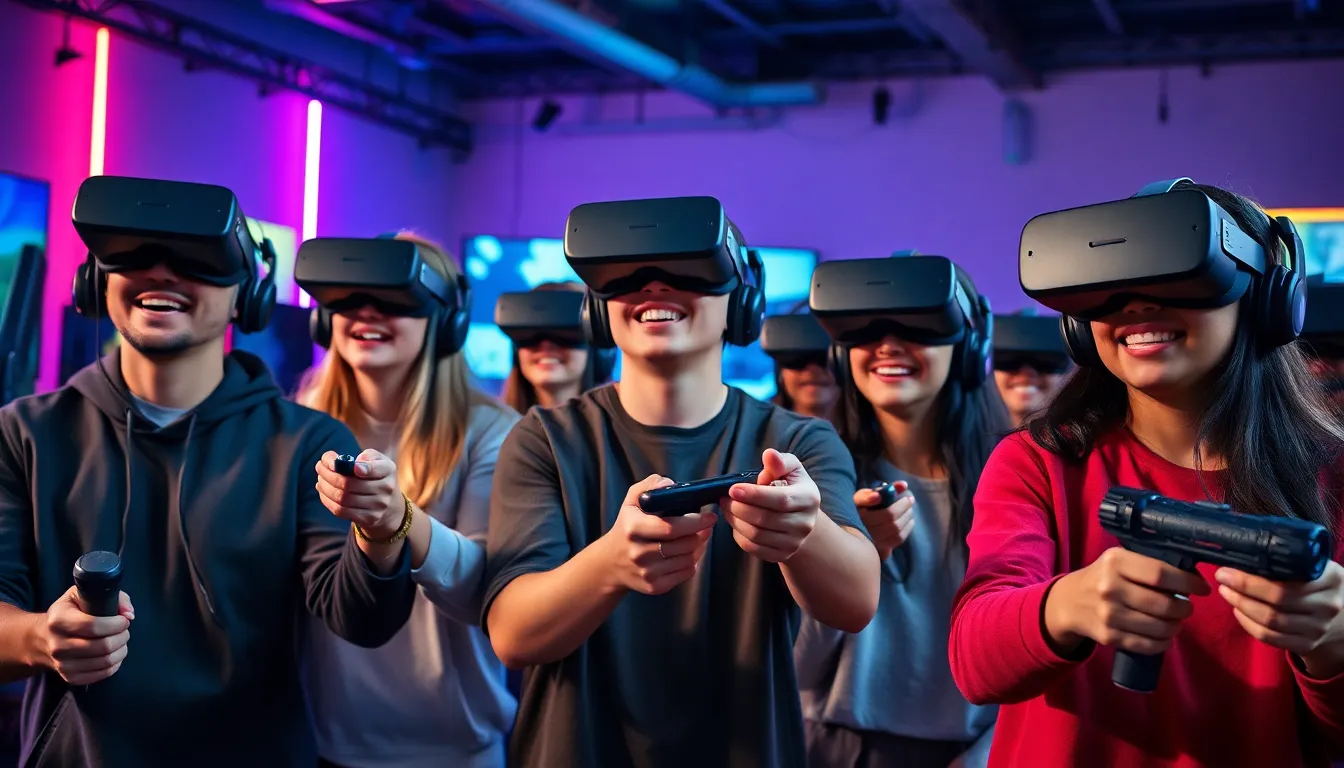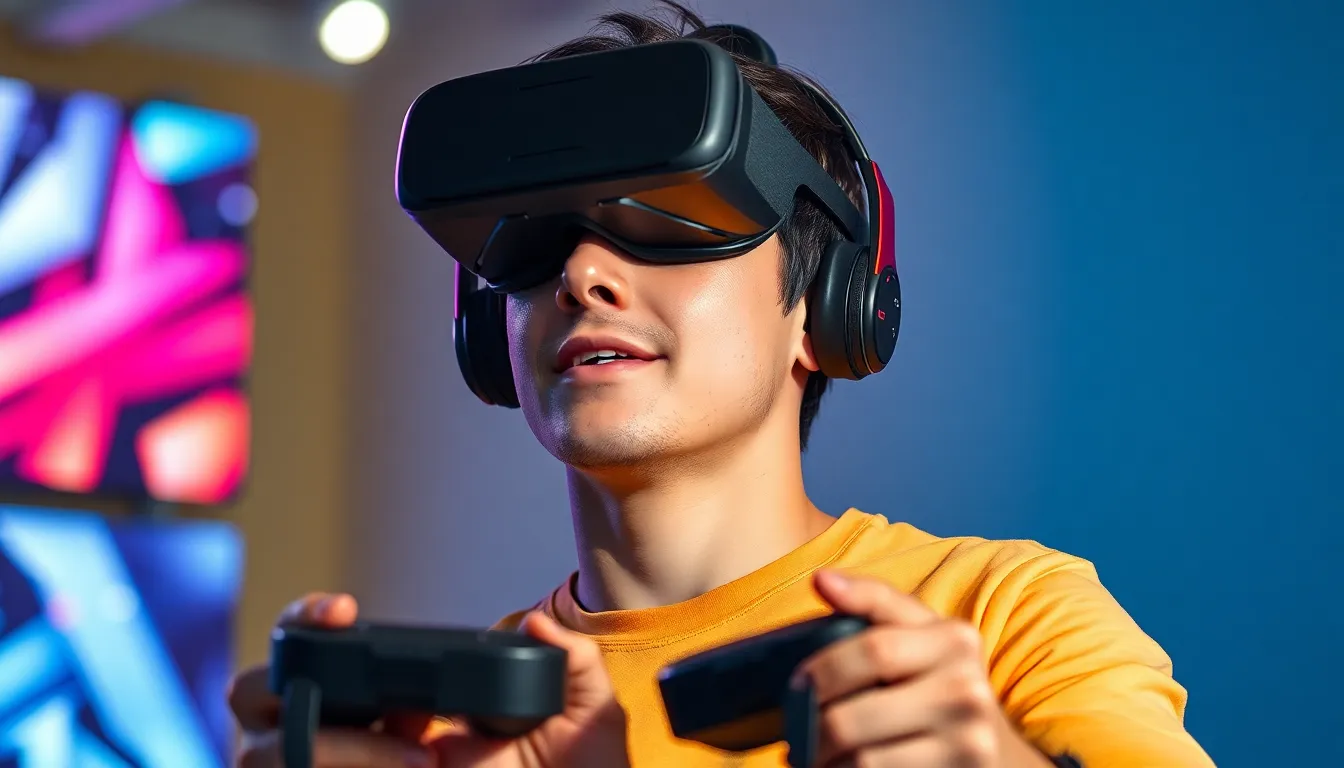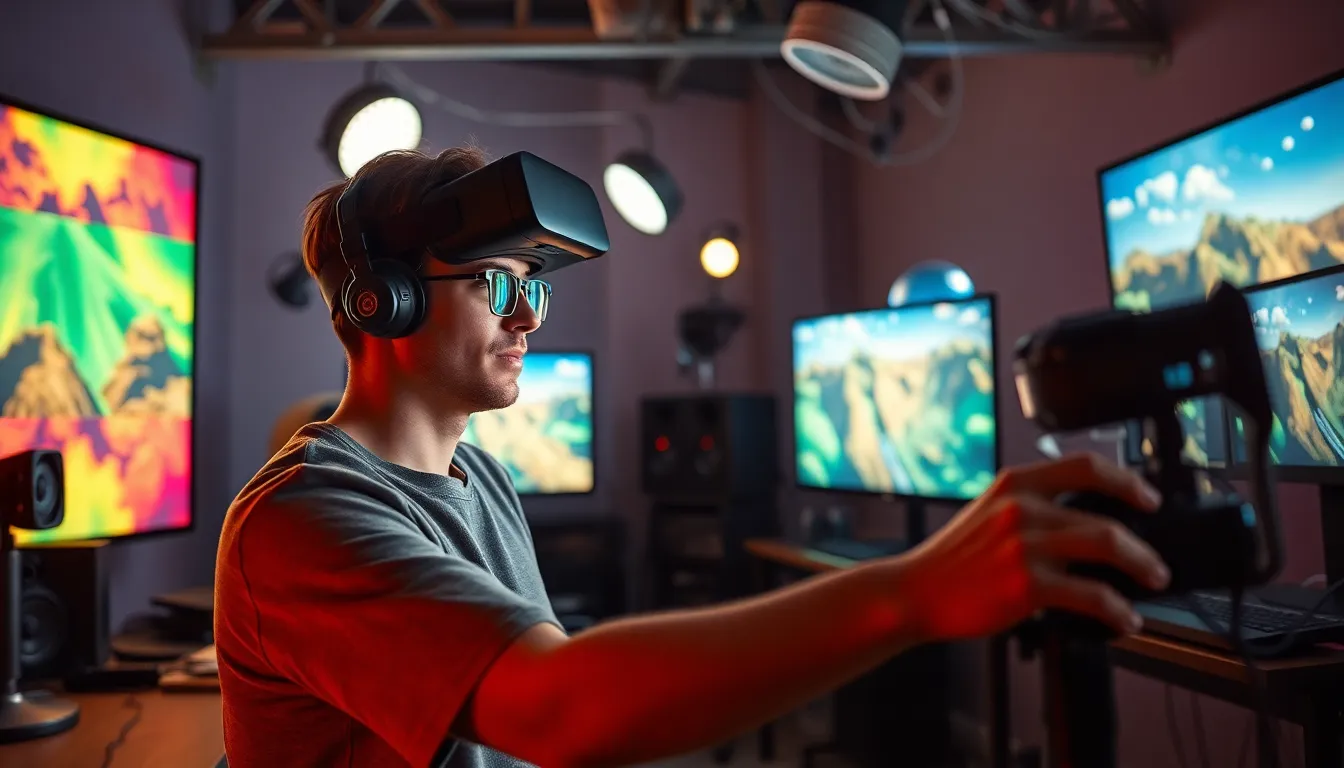In the wild world of virtual reality, the right controller bindings can make or break the experience. Imagine trying to slay dragons or navigate alien landscapes while your buttons are playing a game of hide and seek. It’s like trying to dance with two left feet—awkward and utterly frustrating!
Table of Contents
ToggleUnderstanding VR Controller Bindings
Proper VR controller bindings significantly enhance the virtual reality experience. Users engage more fluidly with their environments when controls align with natural movements.
What Are VR Controller Bindings?
VR controller bindings refer to the configurations that link specific actions or commands to controller buttons and controls. These settings dictate how a user interacts with the virtual environment. For instance, pressing a button may trigger an action like jumping or selecting an item. Understanding these bindings enables players to customize their gameplay preferences according to their comfort and game style.
Importance of Customization
Customization of VR controller bindings plays a vital role in optimizing user experience. Each player has unique preferences and comfort levels, leading to varying requirements for control schemes. Custom setups allow users to adapt controls for better accessibility, thus promoting smoother gameplay interactions. For example, binding the trigger for specific actions can enhance responsiveness in fast-paced scenarios. Adjusting these settings helps minimize confusion, allowing users to focus on gameplay rather than control frustration.
Popular VR Platforms and Their Controller Bindings

Various VR platforms offer unique controller bindings, enhancing user interaction within virtual environments. Configurations differ significantly between platforms, requiring players to customize their setups for the best experience.
Oculus Quest
Oculus Quest presents a user-friendly binding system, allowing players to remap buttons quickly. Users can easily assign actions such as teleporting or menu navigation to specific buttons on the Touch controllers. Common bindings include using the trigger for shooting and the grip button for interactions. Customization tools within Oculus’s software enable users to tailor settings to their preferences. This flexibility supports a smoother gameplay experience, particularly in action-packed games.
HTC Vive
HTC Vive offers robust bindings, emphasizing precision and responsiveness. The controllers feature a touchpad that players can utilize for various navigational tasks. Users enjoy notable bindings like using the trackpad for movement and the trigger for primary actions. In addition, the SteamVR platform supports advanced customization levels, allowing users to map specific actions tailored to their playstyle. Such configurability can significantly influence gameplay, especially in intricate gaming scenarios.
PlayStation VR
PlayStation VR features controller bindings that are intuitive for console gamers. The PlayStation Move controllers allow for straightforward mappings, such as assigning motion controls for aiming and a button for quick interactions. Players often customize settings according to their comfort level, enhancing the overall experience. The built-in customization features within the PlayStation menu promote easy adjustments, leading to quicker immersion in the game world. Streamlined bindings specifically aid in navigating complex environments efficiently.
How to Customize VR Controller Bindings
Customizing VR controller bindings enhances gameplay by enabling users to tailor controls to their preferences. Setting up these configurations requires a few straightforward steps.
Accessing Binding Settings
Accessing binding settings varies by platform. For the Oculus Quest, users navigate to the settings menu, then select “Devices,” followed by “Controllers.” HTC Vive owners can launch SteamVR, open the controller settings from the dashboard, and choose “Manage Controller Binding.” PlayStation VR players should use the PS VR app on their console, selecting “Settings” before accessing the controller options. These pathways simplify the process, ensuring that players quickly find the necessary adjustments.
Mapping Controls to Your Preferences
Mapping controls to individual preferences maximizes comfort and effectiveness. Users can modify assignments by selecting the action associated with a specific button and changing it to a preferred function. Many platforms offer a drag-and-drop feature for ease of use. Sensitivity settings may also require tuning to achieve the desired response. Testing configurations helps fine-tune the setup, ensuring that actions feel natural during gameplay. Taking time to adjust these settings can significantly improve overall immersive experiences.
Advantages of Customizing VR Controller Bindings
Customizing VR controller bindings significantly enhances the immersive experience. Players benefit from tailored setups that match their unique playing styles and comfort.
Enhanced User Experience
Customized bindings promote a more user-friendly interface. By mapping controls according to individual preferences, players enjoy seamless interactions within virtual environments. Responses become quicker, leading to a noticeable improvement in tracking movements and executing actions. Fewer frustrations arise from mismatched controls, allowing users to concentrate on gameplay rather than getting bogged down by improper bindings. Exploring virtual worlds or engaging in action becomes effortless when controls feel instinctive. Ultimately, personalized configurations make VR experiences feel more intuitive and enjoyable.
Improved Gameplay Mechanics
Optimized bindings contribute to refined gameplay mechanics. Custom setups can elevate precision in tackling challenges within games. Players can adjust button mappings to prioritize crucial actions, significantly enhancing reaction times during fast-paced situations. Greater responsiveness emerges when controls align with players’ natural movements. Gamers often find themselves performing better in intense scenarios, as smooth interactions lead to fewer errors. This clarity and fluidity allow for deeper engagement with in-game elements, turning thrilling moments into memorable experiences. Tuning bindings equates to mastering gameplay, resulting in richer interactions and sustained immersion.
Common Issues with VR Controller Bindings
VR controller bindings can pose several challenges that affect gameplay experiences. Recognizing these issues can help users address them more effectively.
Compatibility Problems
Compatibility issues often arise with various VR systems. They may not recognize specific controller models due to outdated software or incorrect configurations. Players using the Oculus Quest, HTC Vive, or PlayStation VR must ensure their devices and controllers are running the latest firmware. Incompatibility can also stem from third-party accessories or additional hardware that might conflict with the standard settings. Frequent updates from developers typically address many of these concerns, so checking for updates regularly helps mitigate potential issues.
Troubleshooting Tips
Resolving controller binding problems often involves a few straightforward troubleshooting steps. Restarting the VR system frequently resolves connectivity issues between the headset and controllers. Re-checking the control mapping settings ensures players haven’t inadvertently altered their preferences. Adjusting the tracking settings improves stability and accuracy during gameplay. Unplugging and re-plugging USB connections can refresh connections as well. Using the support resources provided by VR platforms often yields specific guidance for unique issues and detailed solutions tailored to each system.
Getting VR controller bindings right is essential for a seamless gaming experience. Customizing these settings allows players to engage more fully with their virtual environments. Each platform offers unique tools for tailoring controls to individual preferences, enhancing accessibility and responsiveness.
By taking the time to adjust bindings, players can reduce frustration and focus on the gameplay itself. This attention to detail not only improves precision but also elevates the overall enjoyment of VR experiences. With the right configurations in place, users can truly immerse themselves in their virtual adventures, whether they’re battling dragons or exploring distant planets.



